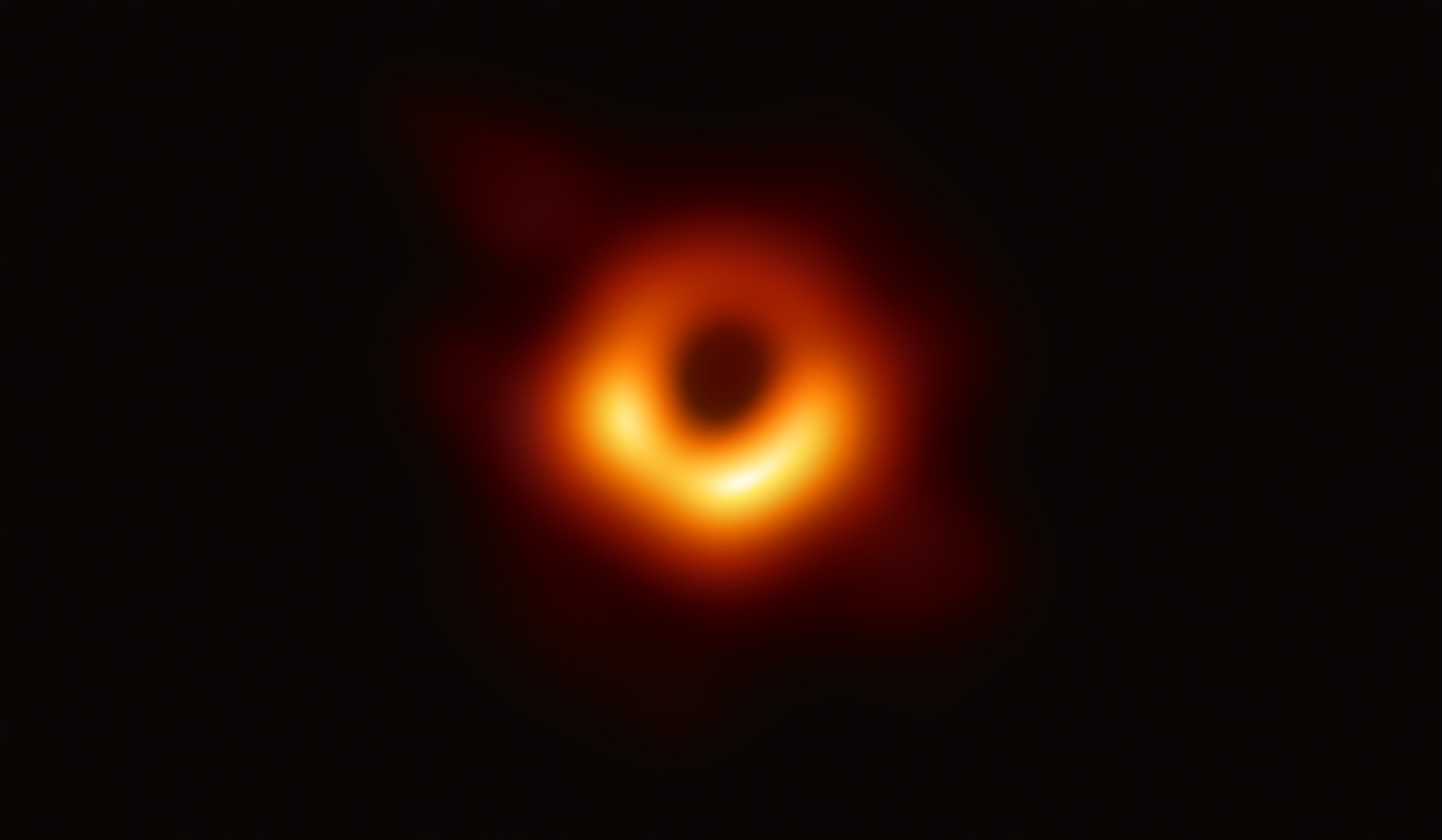Picturing the Event Horizon

In 2019, astronomers captured the first ever image of a black hole. Around it is the Event Horizon, where space and time bend. It’s an amazing picture, but is it art?
Published 25 March 2021
In April 2019, a global network called the Event Horizon Telescope project released a photographic image as evidence of an actual Event Horizon and its blackhole.
The image looks like a hazy orange doughnut, but more than anything, the black space at the centre of the coffee cup rings looks like a portal into absolute nothingness.
And it’s now at the Museum of Modern Art, New York. But, when does science become art?
Author, science writer and artist, Margaret Wertheim says the image is an extraordinary thing, because black holes were predicted by general relativity, but for a long time, pretty much everybody didn’t think that they could actually exist in nature.
“It’s a bit like we’ve captured a picture – you know, in medieval periods, how they say on the edges of the maps, beyond the known world, they go, ‘here there be monsters’. Black holes are these kinds of mythical monsters, lurking out there,” she says.
But is it art?
According to Professor Peter Galison from Harvard University - maybe.
“There’s a long history in modern art of collecting photography beyond people who considered themselves to be artists, whether that meant bringing works in from aspects of photojournalism or science or artists.”
This episode features:
Margaret Wertheim, Australian-born science writer, curator, and artist. Professor Peter Galison, Pellegrino University Professor of the History of Science and of Physics at Harvard University.
Our sound engineer is Arch Cuthbertson. Your hosts and researchers are Dr Andi Horvath and Dr Suzie Fraser. The producer is Dr Andi Horvath. Production assistant is Silvi Vann-Wall.
This episode was recorded on the 11th of August 2020
Banner: Event Horizon Telescope Collaboration



